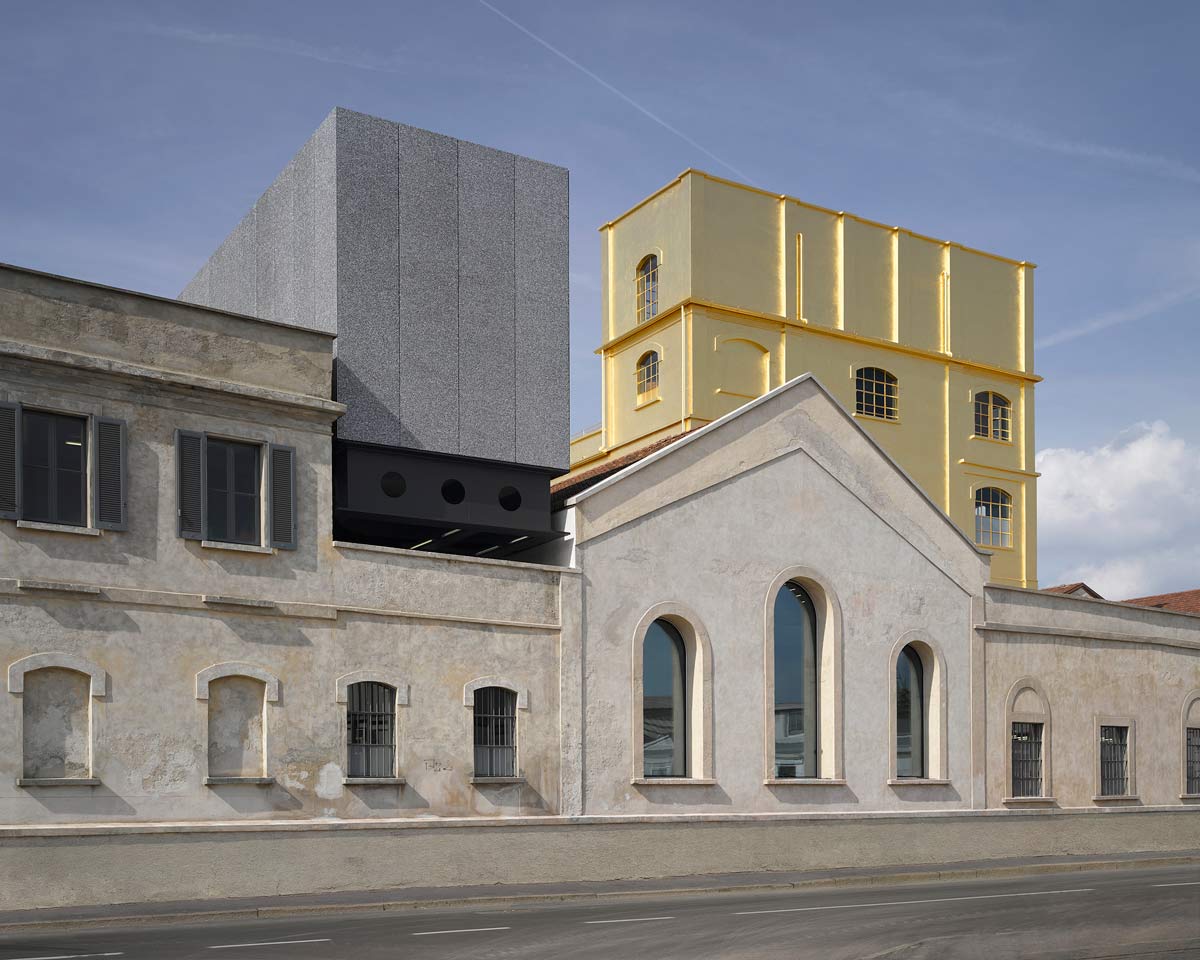
Project Details:
Location: Milan, Italy
Type: Cultural
Site: Former distillery at Largo Isarco No2, Milan, an industrial complex dating from 1910, comprising seven existing structures, including warehouse, laboratories, and brewing silos surrounded by a large courtyard and three new structures including a museum for temporary exhibitions, a transformable cinema building and a 10-storey high gallery tower.
Program: Total public area,12300 m2; total private area, 6600 m2; and total built area, 18900 m2
Client: Fondazione Prada
Architects: OMA
The new Milan venue of the Fondazione Prada, seven years in the making and designed by OMA, opened to the press and on May 9 to the public. The project, led by Rem Koolhaas, Chris van Duijn and Federico Pompignoli, is a milestone in OMA’s long-term collaboration with Prada, delivering a 19,000 m2 campus dedicated to art.
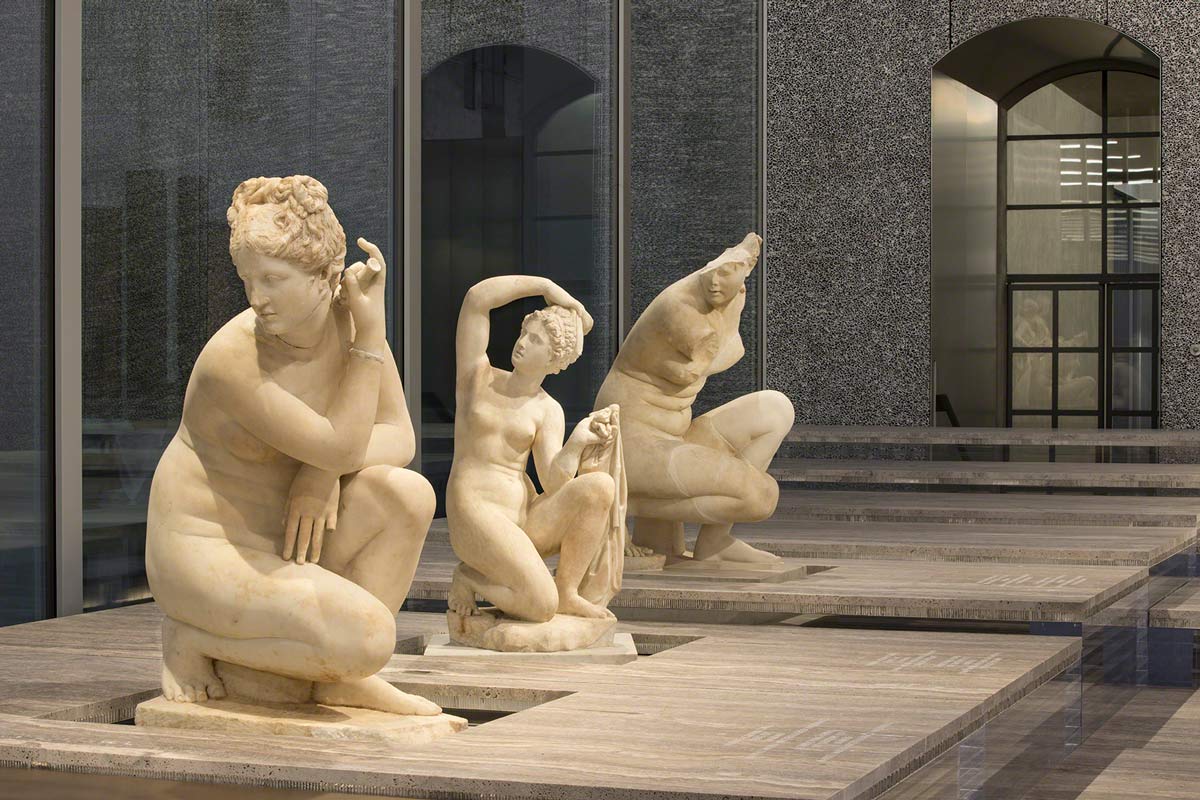
Commissioned by Fondazione Prada, the project embraces a coexistence of new architecture with the regeneration of an early 20th-century gin distillery that includes warehouses, laboratories and brewing silos, as well as new buildings surrounding a large courtyard.
The Fondazione is not a preservation project and not a new architecture. Two conditions that are usually kept separate here confront each other in a state of permanent interaction – offering an ensemble of fragments that will not congeal into a single image, or allow any part to dominate the others.
– Rem Koolhaas
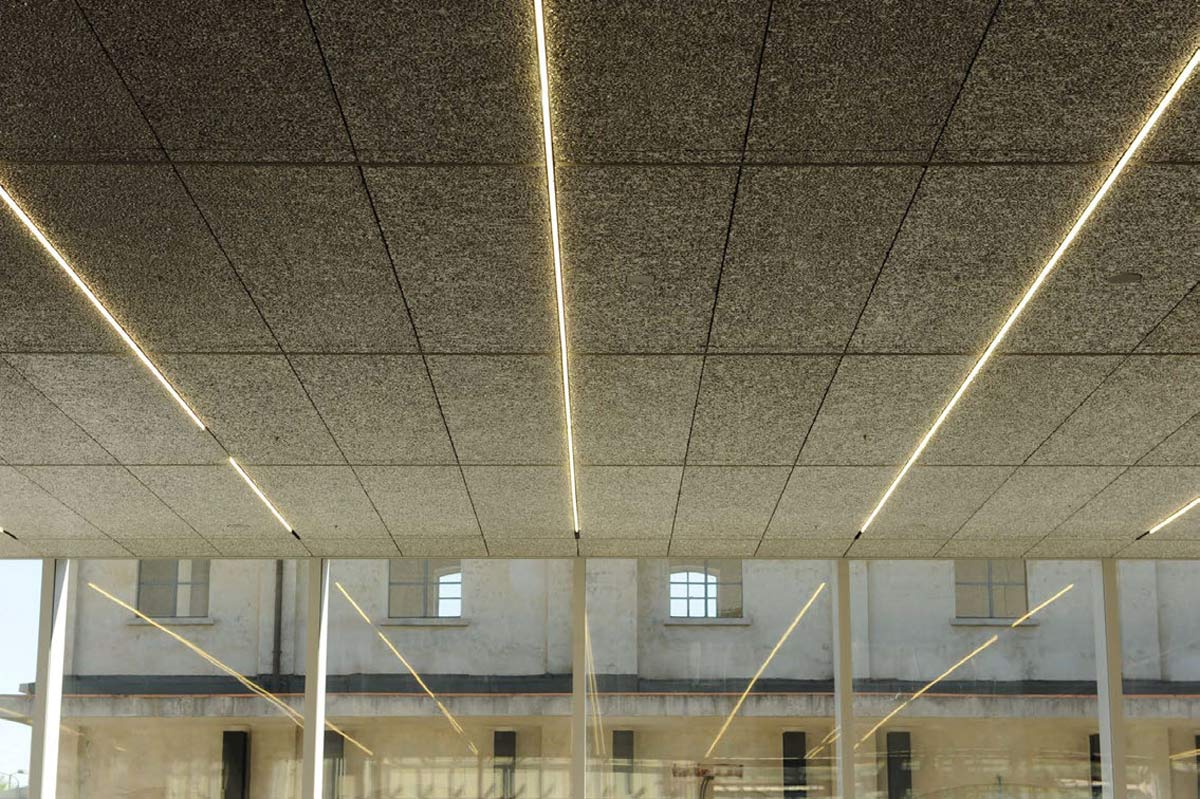
Located in Largo Isarco, south of the city center, the complex aims to expand the repertoire of spatial typologies in which art can be exhibited and shared with the public. The project consists of seven existing buildings, and three new structures: Museum, a space for temporary exhibitions; Cinema, a multimedia auditorium; and Torre, a ten-story permanent exhibition space for displaying the foundation’s collection and activities. Torre, currently undergoing construction work, will be open to the public at a later date.
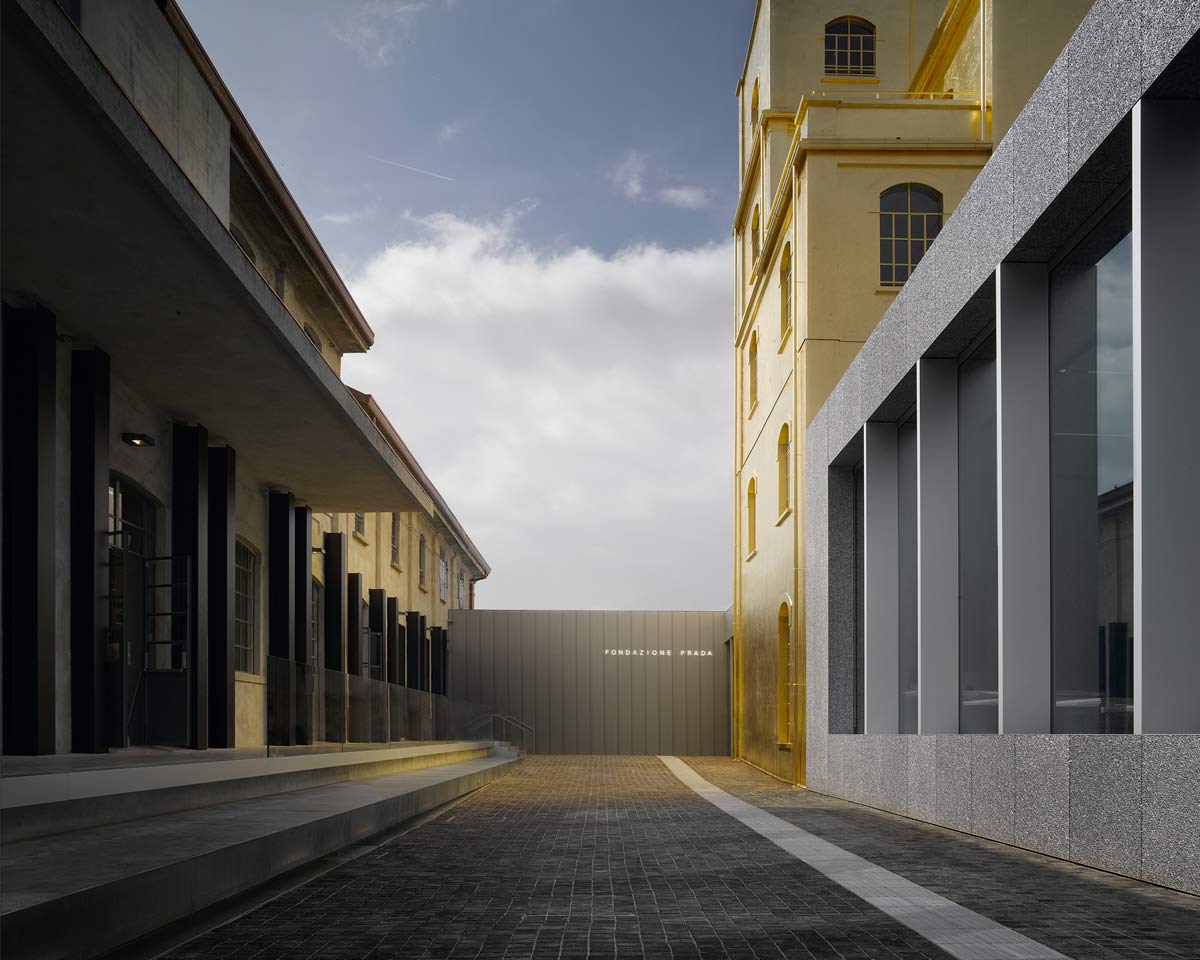
To coincide with the opening of the new venue, OMA has designed two exhibitions for Fondazione Prada: Serial Classic (Milan, May 9–August 24) and Portable Classic (Venice, May 9–September 13). Curated by Salvatore Settis, Serial Classic will occupy the Podium while Portable Classic will be held at the Fondazione Prada’s Venice location, Ca’ Corner. Together, the exhibitions feature Greek and Roman statuary at all scales and examine issues of reproduction and display, aiming to rethink classical notions of the socle and, since the Renaissance and later, the vitrine.
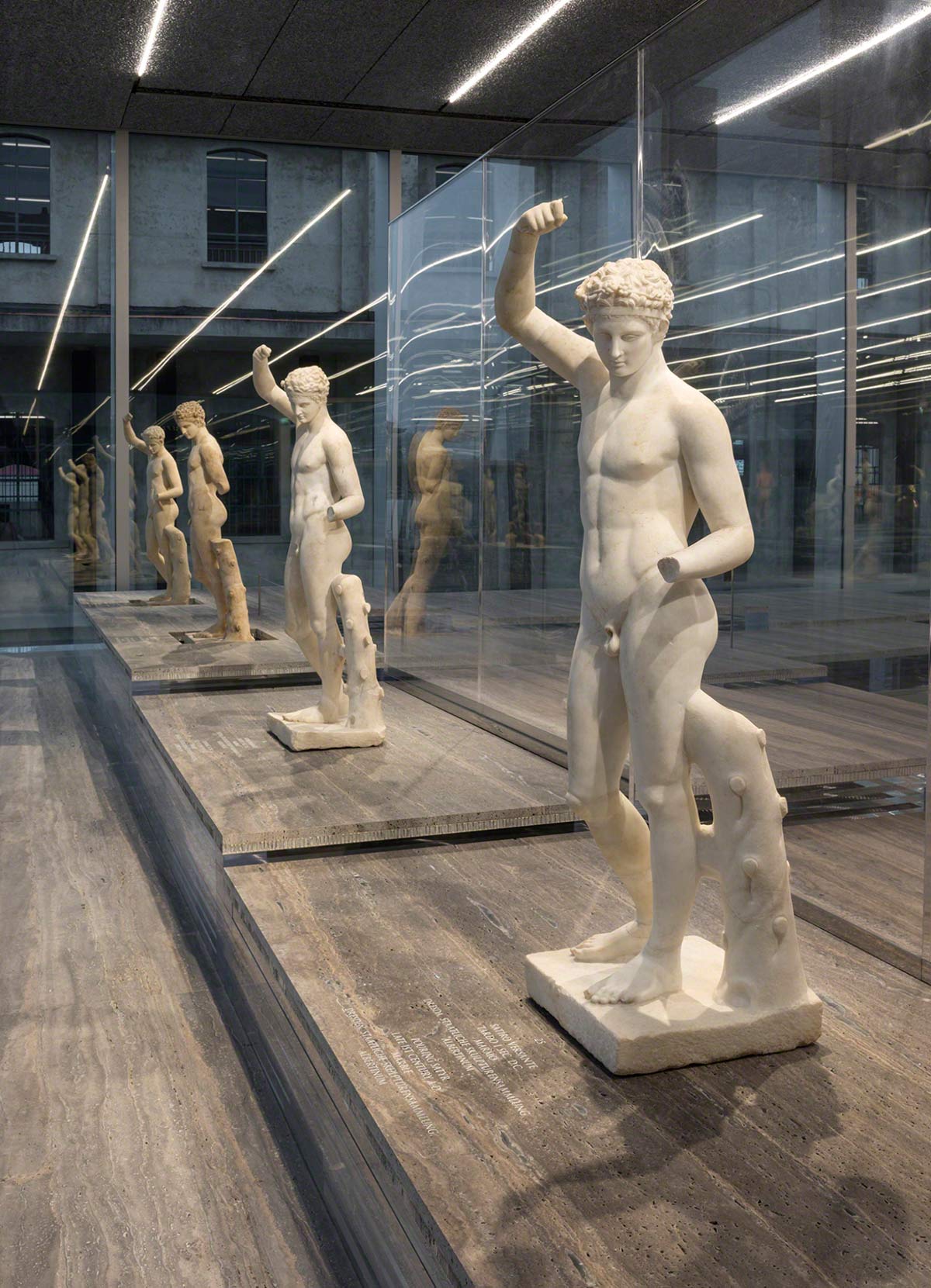
Repertoire
It is surprising that the enormous expansion of the art system has taken place in a reduced number of typologies for art’s display. To apparently everybody’s satisfaction, the abandoned industrial space has become art’s default preference — attractive because its predictable conditions do not challenge the artist’s intentions — enlivened occasionally with exceptional architectural gestures.
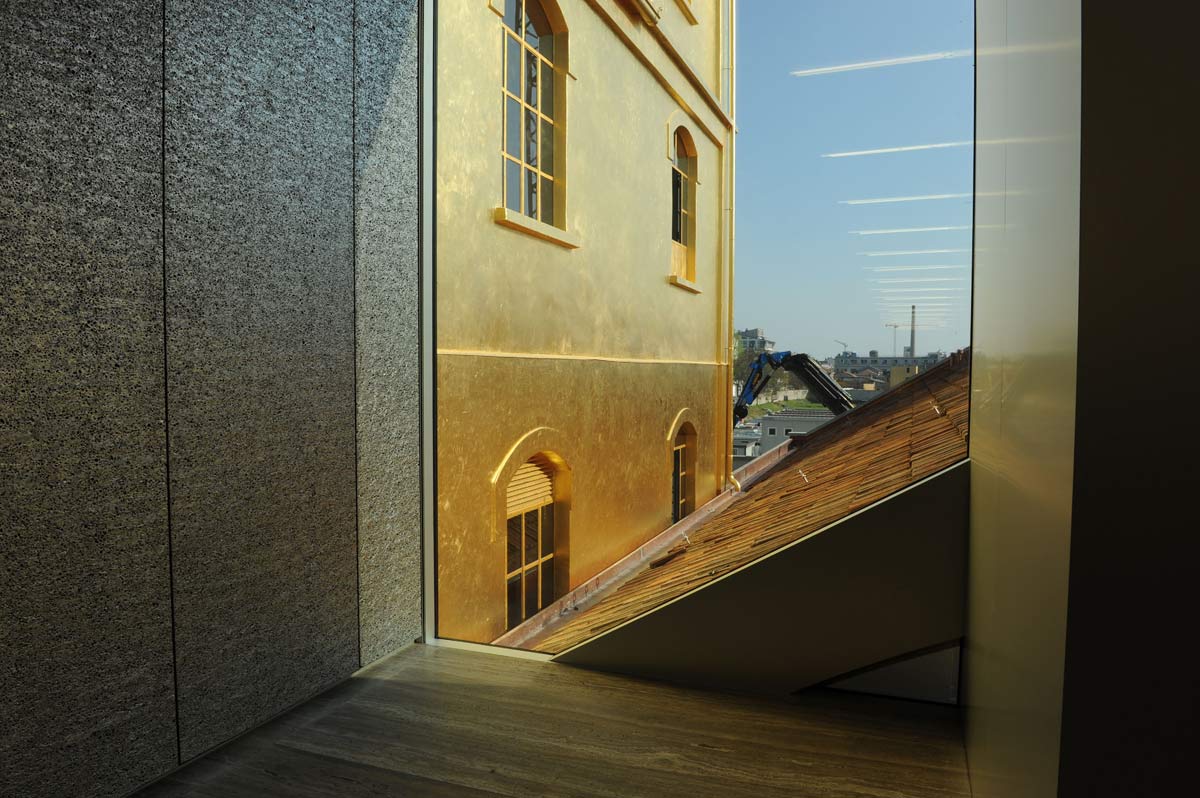
The new Fondazione Prada is projected in a former industrial complex too, but one with an unusual diversity of spatial environments. To this repertoire, we are adding three new buildings — a large exhibition pavilion, a tower, and a cinema — so that the new Fondazione Prada represents a genuine collection of architectural spaces in addition to its holdings in art.
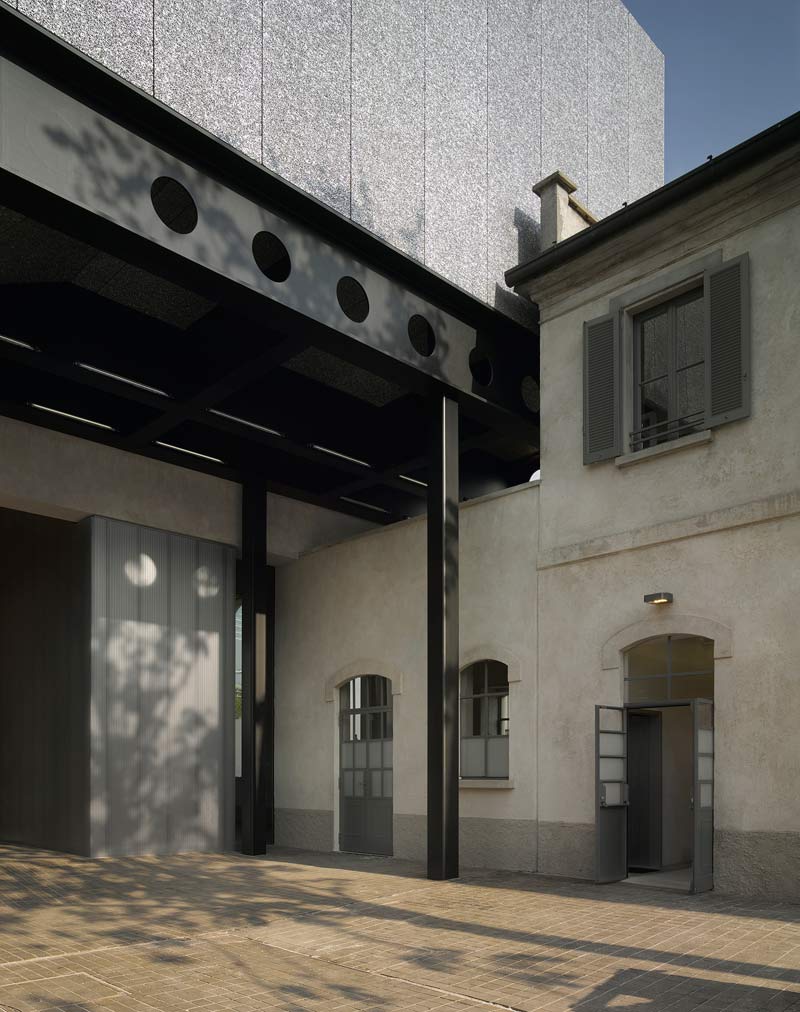
The Fondazione is not a preservation project and not a new architecture. Two conditions that are usually kept separate here confront each other in a state of permanent interaction – offering an ensemble of fragments that will not congeal into a single image, or allow any part to dominate the others.
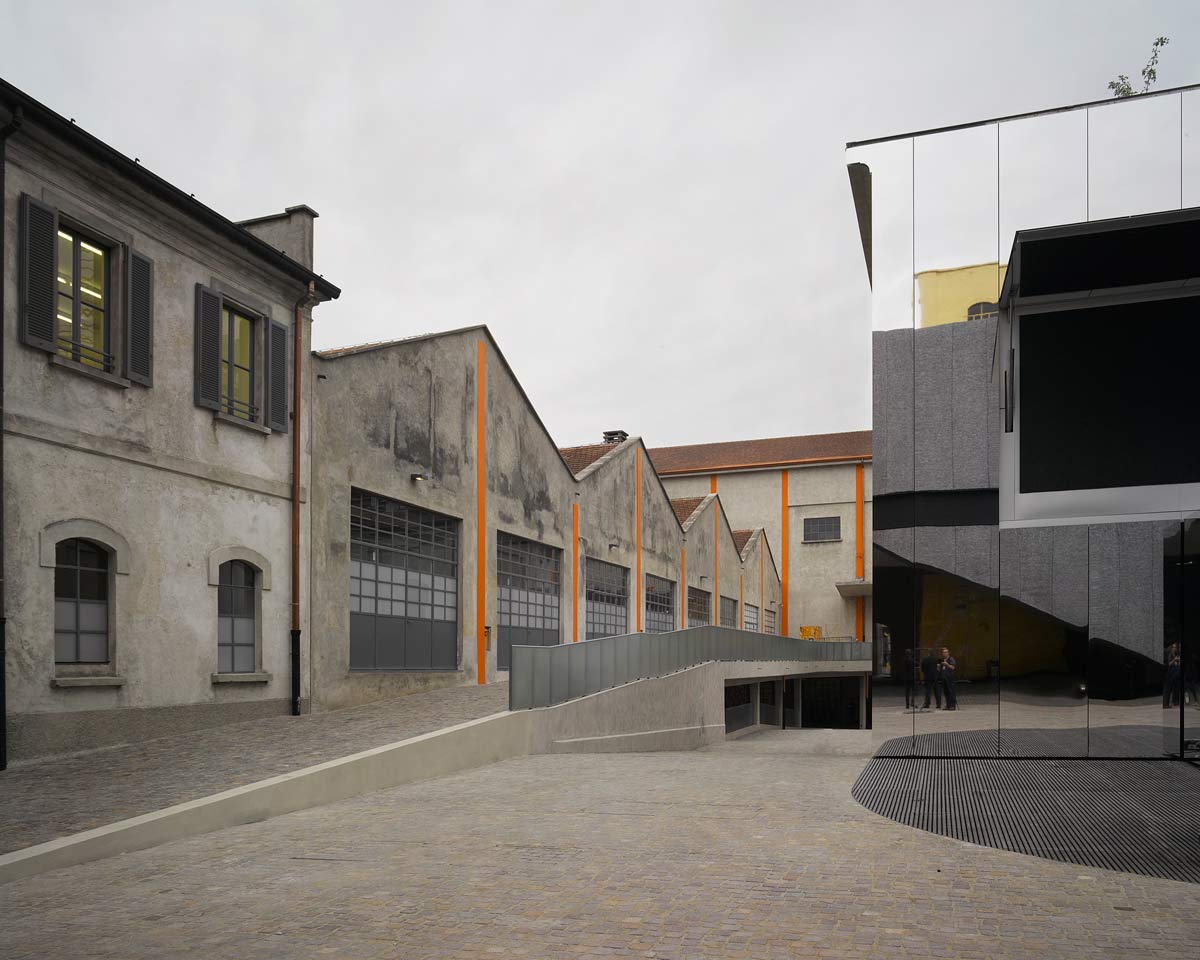
New, old, horizontal, vertical, wide, narrow, white, black, open, enclosed — all these contrasts establish the range of oppositions that define the new Fondazione. By introducing so many spatial variables, the complexity of the architecture will promote an unstable, open programming, where art and architecture will benefit from each other’s challenges.


